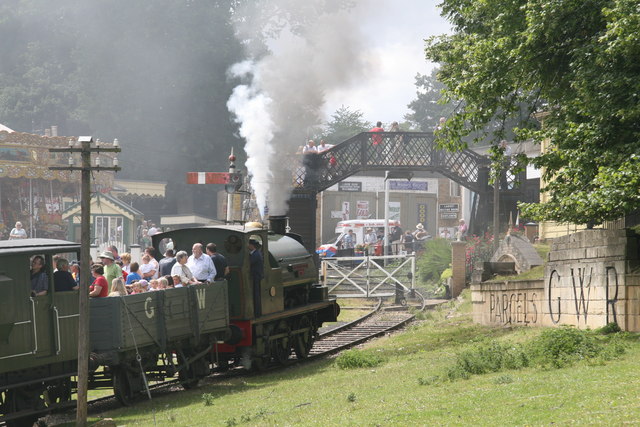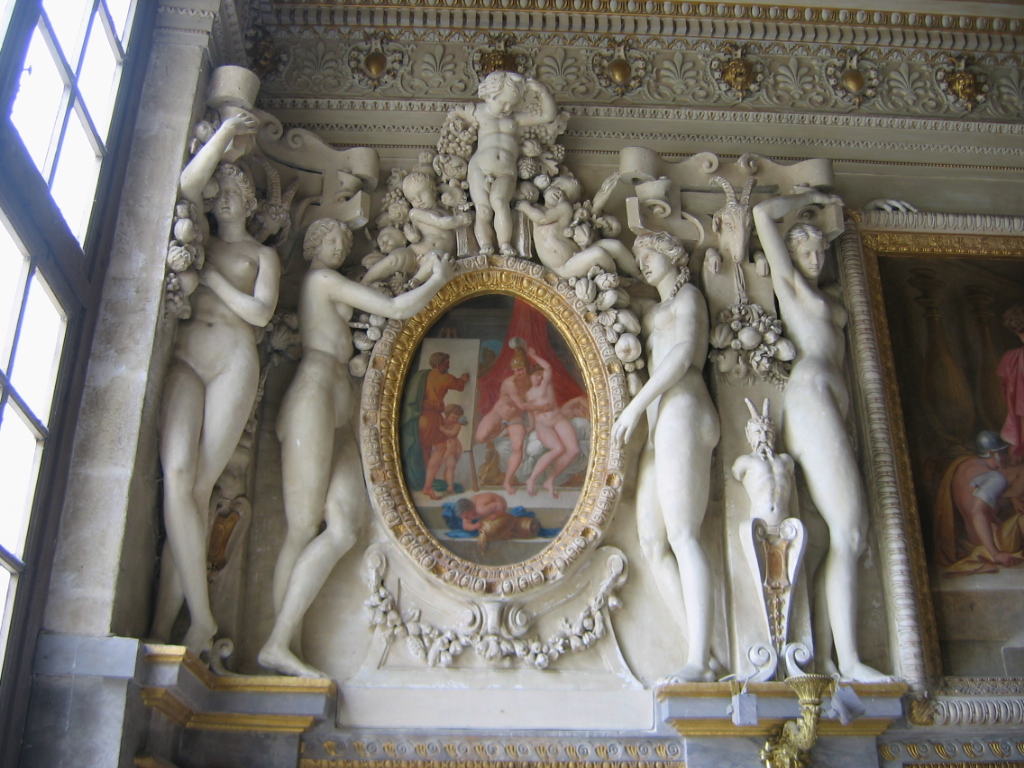|
Leiston Works Railway
The Leiston Works Railway was a private railway that ran from Leiston railway station on the Aldeburgh Branch Line of the Great Eastern Railway to the engineering works of Richard Garrett & Sons. The railway was originally operated by Suffolk Punch horses hauling coal and iron from the main line to the Garrett Works. This was later taken over by steam shunting engine 'Sirapite' which was then replaced by a battery electric engine in 1962. The line closed in 1968, with the battery locomotive being scrapped. Restoration After closure of the works, part of the complex was preserved as the Long Shop Museum, while Sirapite survived, unrestored, in the private collection of Sir William McAlpine. The locomotive has since been returned to Leiston and restored to operational condition. A group has been formed with the intention of restoring the 250 yard stretch of track running behind the Engineers Arms public house to the entrance of the Master Lord Industrial Estate, close to the ... [...More Info...] [...Related Items...] OR: [Wikipedia] [Google] [Baidu] |
Leiston Railway Station
Leiston railway station was a station in Leiston, Suffolk. It was opened in 1859 by the East Suffolk Railway and later became part of the Great Eastern Railway on its branch line from to . It was closed in 1966 as part of the Beeching Axe as much of the British rural rail network was cut back. The station survives intact and the line is still used to service the nearby nuclear power station at Sizewell Sizewell is an English fishing hamlet in the East Suffolk district of Suffolk, England. It belongs to the civil parish of Leiston and lies on the North Sea coast just north of the larger holiday village of Thorpeness, between the coastal town .... History Passenger services lasted up until 1966 when the line closed to passengers. In August 1967, the track between Aldeburgh and Sizewell siding was lifted using steam cranes. By 1969, all that remained was one single line to Sizewell. In 2005, the line through the station was used for staff road training. References { ... [...More Info...] [...Related Items...] OR: [Wikipedia] [Google] [Baidu] |
Great Eastern Railway
The Great Eastern Railway (GER) was a pre-grouping British railway company, whose main line linked London Liverpool Street to Norwich and which had other lines through East Anglia. The company was grouped into the London and North Eastern Railway in 1923. Formed in 1862 after the amalgamation of the Eastern Counties Railway and several other smaller railway companies the GER served Cambridge, Chelmsford, Colchester, Great Yarmouth, Ipswich, King's Lynn, Lowestoft, Norwich, Southend-on-Sea (opened by the GER in 1889), and East Anglian seaside resorts such as Hunstanton (whose prosperity was largely a result of the GER's line being built) and Cromer. It also served a suburban area, including Enfield, Chingford, Loughton and Ilford. This suburban network was, in the early 20th century, the busiest steam-hauled commuter system in the world. The majority of the Great Eastern's locomotives and rolling stock were built at Stratford Works, part of which was on the site of t ... [...More Info...] [...Related Items...] OR: [Wikipedia] [Google] [Baidu] |
Richard Garrett & Sons
Richard Garrett & Sons was a manufacturer of agricultural machinery, steam engines and trolleybuses. Their factory was Leiston Works, in Leiston, Suffolk, England. The company was founded by Richard Garrett in 1778. The company was active under its original ownership between 1778 and 1932. In the late 1840s, after cultivating a successful agricultural machine and implement business, the company began producing portable steam engines. The company grew to a major business employing around 2,500 people. Richard Garrett III, grandson of the company's founder, visited the Great Exhibition in London in 1851, where he saw some new American manufacturing ideas. Richard Garrett III introduced flow line production – a very early assembly line - and constructed a new workshop for the purpose in 1852. This was known as 'The Long Shop' on account of its length. A machine would start at one end of the Long Shop and as it progressed through the building it would stop at various sta ... [...More Info...] [...Related Items...] OR: [Wikipedia] [Google] [Baidu] |
Long Shop Museum
The Long Shop Museum is an industrial museum in the town of Leiston in the English county of Suffolk.Long Shop Museum , Suffolk Heritage Direct, Suffolk County Council. Retrieved 2014-03-01. The museum is dedicated to the history of who manufactured , and |
Sir William McAlpine, 6th Baronet
Sir William Hepburn McAlpine, 6th Baronet, (12 January 1936 – 4 March 2018) was a British businessman who was director of the construction company Sir Robert McAlpine. Early life and career Born in London in 1936 at the family-owned Dorchester Hotel, McAlpine was the oldest son of Sir Edwin McAlpine, 5th Bt (who was given a life peerage as Lord McAlpine of Moffat in 1980) by his marriage to Ella Mary Gardner Garnett. His great-grandfather was "Concrete Bob", Sir Robert McAlpine, the first of the McAlpine baronets and the founder of the construction company. He had two younger brothers Alistair McAlpine, Baron McAlpine of West Green and David McAlpine. Brought up at the family home in Surrey and educated at Charterhouse, McAlpine joined the family firm from school, starting his career at the Hayes Depot in Middlesex, a site which housed the McAlpine railway locomotive and wagon fleet. The years after the Second World War were a busy time for the construction industry. H ... [...More Info...] [...Related Items...] OR: [Wikipedia] [Google] [Baidu] |
Public House
A pub (short for public house) is a kind of drinking establishment which is licensed to serve alcoholic drinks for consumption on the premises. The term ''public house'' first appeared in the United Kingdom in late 17th century, and was used to differentiate private houses from those which were, quite literally, open to the public as "alehouses", " taverns" and " inns". By Georgian times, the term had become common parlance, although taverns, as a distinct establishment, had largely ceased to exist by the beginning of the 19th century. Today, there is no strict definition, but CAMRA states a pub has four characteristics:GLA Economics, Closing time: London's public houses, 2017 # is open to the public without membership or residency # serves draught beer or cider without requiring food be consumed # has at least one indoor area not laid out for meals # allows drinks to be bought at a bar (i.e., not only table service) The history of pubs can be traced to Roman taverns ... [...More Info...] [...Related Items...] OR: [Wikipedia] [Google] [Baidu] |
Plaster
Plaster is a building material used for the protective or decorative coating of walls and ceilings and for moulding and casting decorative elements. In English, "plaster" usually means a material used for the interiors of buildings, while "render" commonly refers to external applications. Another imprecise term used for the material is stucco, which is also often used for plasterwork that is worked in some way to produce relief decoration, rather than flat surfaces. The most common types of plaster mainly contain either gypsum, lime, or cement,Franz Wirsching "Calcium Sulfate" in Ullmann's Encyclopedia of Industrial Chemistry, 2012 Wiley-VCH, Weinheim. but all work in a similar way. The plaster is manufactured as a dry powder and is mixed with water to form a stiff but workable paste immediately before it is applied to the surface. The reaction with water liberates heat through crystallization and the hydrated plaster then hardens. Plaster can be relatively easily worke ... [...More Info...] [...Related Items...] OR: [Wikipedia] [Google] [Baidu] |
Electric Locomotive
An electric locomotive is a locomotive powered by electricity from overhead lines, a third rail or on-board energy storage such as a battery or a supercapacitor. Locomotives with on-board fuelled prime movers, such as diesel engines or gas turbines, are classed as diesel-electric or gas turbine-electric and not as electric locomotives, because the electric generator/motor combination serves only as a power transmission system. Electric locomotives benefit from the high efficiency of electric motors, often above 90% (not including the inefficiency of generating the electricity). Additional efficiency can be gained from regenerative braking, which allows kinetic energy to be recovered during braking to put power back on the line. Newer electric locomotives use AC motor-inverter drive systems that provide for regenerative braking. Electric locomotives are quiet compared to diesel locomotives since there is no engine and exhaust noise and less mechanical noise. The lack of ... [...More Info...] [...Related Items...] OR: [Wikipedia] [Google] [Baidu] |
LNER Class A3 4472 Flying Scotsman
LNER Class A3 4472 ''Flying Scotsman'' is a 4-6-2 Pacific steam locomotive built in 1923 for the London and North Eastern Railway (LNER) at Doncaster Works to a design of Nigel Gresley. It was employed on long-distance express East Coast Main Line trains by the LNER and its successors, British Railways Eastern and North-Eastern Regions, notably on the London to Edinburgh '' Flying Scotsman'' train service after which it was named. The locomotive set two world records for steam traction, becoming the first steam locomotive to be officially authenticated as reaching on 30 November 1934, and then setting a record for the longest non-stop run by a steam locomotive when it ran on 8 August 1989 while in Australia. Retired from regular service in 1963 after covering 2.08 million miles, ''Flying Scotsman'' enjoyed considerable fame in preservation under the ownership of, successively, Alan Pegler, William McAlpine, Tony Marchington, and finally the National Railway Museum (NRM ... [...More Info...] [...Related Items...] OR: [Wikipedia] [Google] [Baidu] |
Mid-Suffolk Light Railway
The Mid-Suffolk Light Railway (MSLR) was a standard gauge railway intended to open up an agricultural area of central Suffolk; it took advantage of the reduced construction cost enabled by the Light Railways Act 1896. It was launched with considerable enthusiasm by local interests, and was to build a 50-mile network, but actual share subscription was weak, and the company over-reached its available financial resources. It opened 19 miles of route from Haughley to Laxfield in 1904 to goods traffic only, and income was poor, further worsening the company's financial situation. The Board continued to harbour ambitions to complete the planned network, but crippling interest on loans and capital repayments falling due forced the company into receivership in 1906. Passenger operation was started in 1908, but this too was disappointing. At the grouping of the railways in 1923, the MSLR was still in receivership, and there was a protracted dispute over the liquidation of the debt, but i ... [...More Info...] [...Related Items...] OR: [Wikipedia] [Google] [Baidu] |
Rail Transport In Suffolk
Rail or rails may refer to: Rail transport *Rail transport and related matters *Rail (rail transport) or railway lines, the running surface of a railway Arts and media Film * ''Rails'' (film), a 1929 Italian film by Mario Camerini * ''Rail'' (1967 film), a film by Geoffrey Jones for British Transport Films *''Mirattu'' or ''Rail'', a Tamil-language film and its Telugu dub Magazines * ''Rail'' (magazine), a British rail transport periodical * ''Rails'' (magazine), a former New Zealand based rail transport periodical Other arts *The Rails, a British folk-rock band *Rail (theater) or batten, a pipe from which lighting, scenery, or curtains are hung Technology *Rails framework or Ruby on Rails, a web application framework *Rail system (firearms), a mounting system for firearm attachments *Front engine dragster *Runway alignment indicator lights, a configuration of an approach lighting system *Rule Augmented Interconnect Layout, a specification for expressing guidelines for printe ... [...More Info...] [...Related Items...] OR: [Wikipedia] [Google] [Baidu] |







